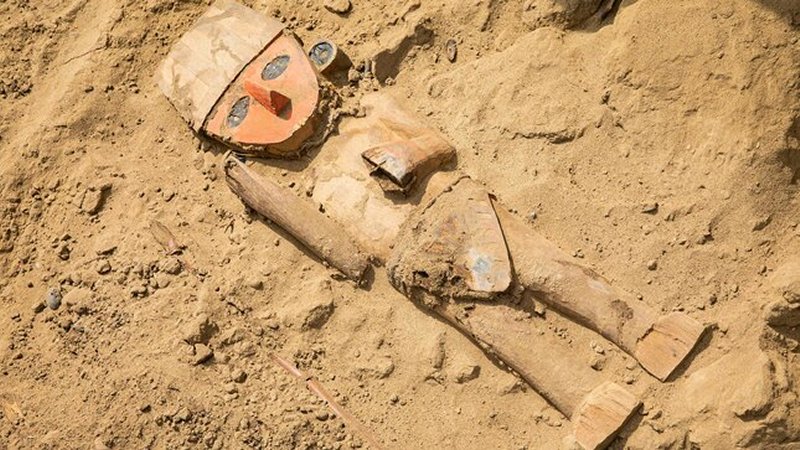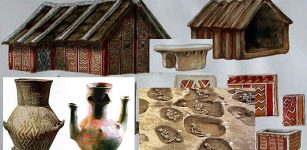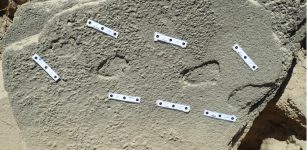Ancient Wooden Sculpture Unearthed In Peru’s Chan Chan
Conny Waters - AncientPages.com - A perfectly preserved wooden sculpture was recently discovered at the Chan Chan archaeological complex in northern Peru.
Wooden sculpture depicting a litter bearer of a ruler unearthed at Chan Chan, Peru. Image credit: Directorate of Culture of La Libertad
Chan Chan was the capital of the historical empire of the Chimor from 900 to 1470. Chan Chan is believed to have been constructed around 850 AD by the Chimú. It was the Chimor empire capital city. Later, they were defeated and incorporated into the Inca Empire.
The figurine – discovered within the Investment Project “Recovery of the Takaynamo Huaca of the Chan Chan Archaeological Complex” - is 47 centimeters long by 16 centimeters wide, and appears to depict a ruler’s litter bearer.
"Chimú wood carvings or sculptures are fixed or mobile. The first are documented in the entrance of some walled sets of Chan Chan, from an uncut segment that, when buried, fixes the carved portion of the element in the ground. The mobile sculpture lacks such an element and has often been documented in some huacas,” said the archaeologist Arturo Paredes Núñez, head of the Research, conservation and Enhancement Unit of Pecach, in a statement.
The sculpture wears a trapezoidal cut cap on the narrow top, which is decorated witj seven vertical bands of alternating light and dark colors. At the bottom, the wooden sculpture has a dark horizontal band. The face is flat, oval cut and painted red. The nose, with a straight profile, is protruding into the plane of the face.
Chan Chan figurine. Image credit: Directorate of Culture of La Libertad
The eyes are almond-shaped, and circular ears exhibit assymetry, because a black resin is preserved that would have served to fix mother of-pearl plates, according to the explanation of the Chan Chan researcher.
Carved position and clothing
The left arm, attached to the body, bends to the right, and the outstretched hand is arranged on the anterior side of the torso. The right arm is also attached to the body, bend upwards, so that the hand is at shoulder height. Torso, arms and hands appear to have been painted red; dark circular spots are observed on the chest.
The character wears a triangular-cut skirt, the edge is decorated with small rectangular bands, similar to those of the headdress. The center is a triangular space of dark coloring. The legs are straight and the feet slightly apart; the anterior portion of them has been partially cut off.
Along with the sculpture, the arcgaeologists found nectandra seeds that must have formed a necklace (some of them have inserted thread). A small black handbag with decoration achieved by brown and white threads was registered under the sculpture. As the director (e) of the Special Project Archaeological Complex of Chan Chan, César Gálvez Mora, noted “the finding adds to evidence significant that emphasizes the role of ceremonial of a building peripheral to Chan Chan.”
Already a few years ago, archaeologists unearthed twenty human-like wooden sculptures, each approximately 70 cm (27 inches) tall, have been unearthed at this archaeological site.
The 2018 discovery: Wooden sculptures unearthed at the Chan Chan archaeological complex in northern Peru. Image credit: UNTV News
The figures (probably created about the year 1100) and the detailed wall are thought to have been buried more than 800 years ago. Some of the figures carry what staffs and shields while others have decapitated heads.
Written by Conny Waters - AncientPages.com Staff Writer























